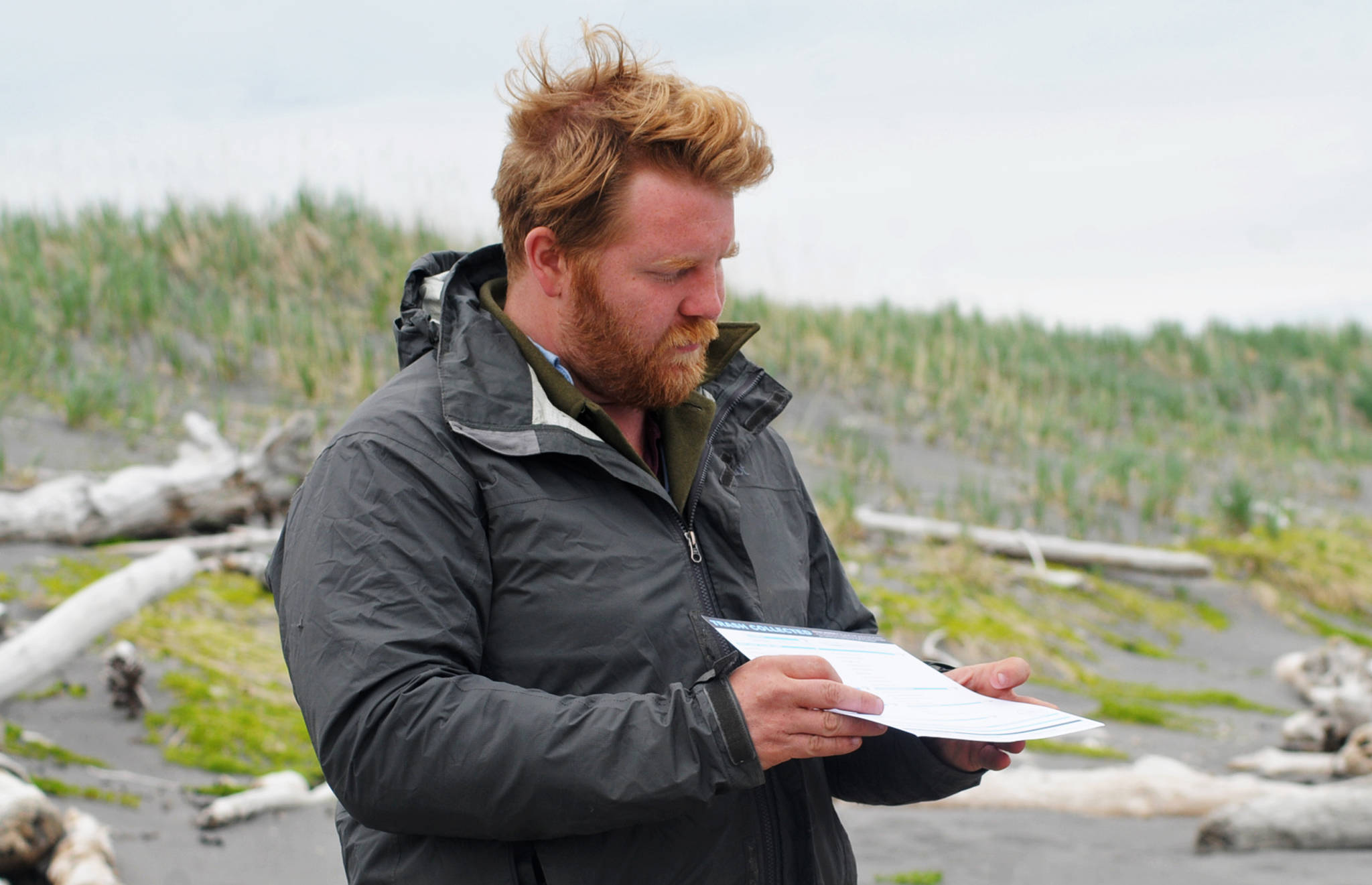Homer’s local environmental education organization, the Center for Alaskan Coastal Studies, last month received a $204,000 grant to engage Alaska teachers, students and communities in preparing and responding to coastal hazards and climate change. CACS director Beth Trowbridge will manage the grant and work with other nonprofit science and education groups on the project.
“The really cool and unique thing about this and our partners — we engage students in doing place-based science education,” Trowbridge said in an interview last month. “We all try to use real data and real-life problems to engage students in stewardship.”
Also included in the grant are the Prince William Sound Regional Citizens Advisory Council, the Kachemak Bay National Estuarine Research Service, the Alaska Sea Grant program, the Alaska SeaLife Center and the Prince William Sound Science Center.
“The partnership is really exciting,” said Marilyn Sigman of the Sea Grant Program. “We’ve been trying for several years how to work together statewide. This partnership is happy to have some resources to do that.”
Called “CoastWatch for Action,” the CACS grant came from the National Academies of Sciences, Engineering and Medicine Gulf Research Program, one of 12 groups awarded $3.2 million. CACS was the only Alaska and Pacific Ocean coast organization to receive a grant. Nonprofits in Florida, Alabama, Texas, Mississippi, Maine and Louisiana also got grants. The Gulf Research Program came about in 2013 as a result of the Deepwater Horizon oil spill.
“The Gulf Research Program is committed to investing in community-based organizations that have strong ties to the people they serve,” Maggie Waiser, director of education and capacity building, said in a press release on May 11. “One of the program’s priorities is supporting science that benefits coastal communities and helps them prepare for future health and environmental challenges.”
Over the next two years, CACS will work with the other nonprofits to:
• Develop materials to educate youth and adults in Alaska coastal communities about the effects of oil spills and other coastal hazards related to climate change;
• Train teachers in Alaska coastal communities and build a network that connects community preparedness professionals with students and teachers;
• Help communities with few resources address the risk of coastal environmental hazards, and
• Foster environmental stewardship and help teachers and students apply scientific concepts to coastal challenges.
Over its 35-year history, CACS has developed programs like CoastWatch, its annual survey and clean up of Kachemak Bay beaches. Through outreach to schools and guided tours and programs at its Carl Wynn Nature Center and Peterson Bay Field Stations, CACS educators teach learners of all ages about the Kachemak Bay environment.
“We feel like we have a model for being able to deliver programs that engage youth with real science,” Trowbridge said.
Those are the kinds of programs CoastWatch for Action plans to extend to western Alaska, Bering Straits and Chukchi Sea communities.
“The idea is those are the areas right now being the most impacted by climate change and coastal issues, coastal hazards,” Trowbridge said. “Some of those communities are the ones that have the least resources due to their remote location.”
The Prince William Sound RCAC has been a leader in oil-spill education. Bering Sea and Arctic communities haven’t been as concerned with oil spills on the magnitude of the 1989 Exxon Valdez oil spill, but as shipping lanes open up with warming oceans and oil and gas development grows, that could be a greater concern.
Sigman, a former CACS director, joins CoastWatch for Action through her job with the Alaska Sea Grant program in Anchorage. Sigman has already worked as a consultant for the North Slope Borough in curriculum development. She said the partner agencies in CoastWatch for Action had been wanting to share their expertise with other coastal communities using what’s called “place based” education. That means working with local communities to adapt programs sensitive to their cultures, environment and concerns.
Sigman had already been doing that with the North Slope Borough School District. The district is committed to a place-based program with a framework around the Inupiaq culture of Utqiagvik (formerly Barrow) and other North Slope villages. Place-based education goes hand-in-hand with local cultures, Sigman said.
“It then becomes a good way to bring in that local knowledge and honor it,” she said. “Kids can actually collect data that is informed by what others in their community already know or have observed.”
While CoastWatch for Action helps other Alaska communities develop programs and connect with other villages, Trowbridge said that will be done with respect for local culture.
“We understand that, the idea that in those communities, whatever is being done has to be culturally responsive,” she said.
This month, CoastWatch for Action begins developing agency partnerships and a work plan. After that they will visit communities, do professional workshops and work with schools and teacher to make the program happen. The workshops will begin in the fall of 2018 for the 2018-19 school year.
Michael Armstrong can be reached at michael.armstrong@homernews.com.


